Yesterday, Australia’s mainstream media was buzzing with the news that seven of Australia’s universities are ranked in the top 100 universities globally. The below graphic, courtesy of The Australian, shows which universities made the cut:
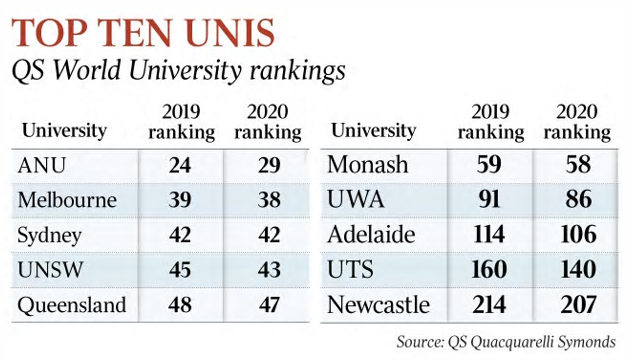
These rankings are important to universities because they are used to market themselves overseas. A higher ranking equates to more prestige and acts as an attractive tool to encourage international students to choose their institution of another, as well as justify charging higher fees.
Indeed, each of the Group of Eight universities shown above have experienced sharp increases in the share of commencing international students:
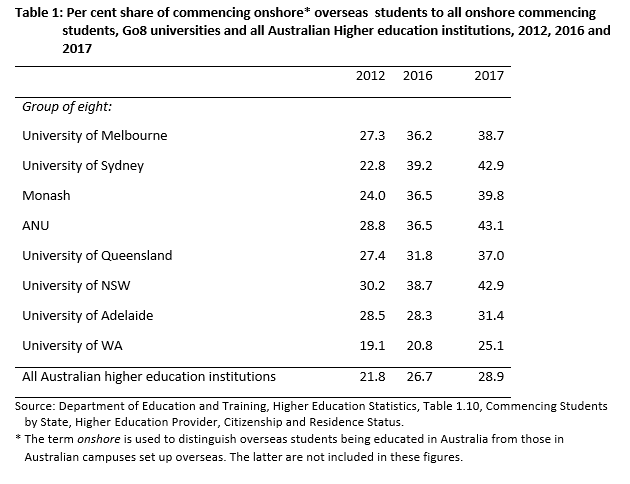
One downside is that the explosion in international students, and students more broadly, has generally not been matched with commensurate increases in academic (teaching) staff. As noted yesterday, Australia’s universities as a whole have chosen to spend much of their international student revenue windfall on boosting their administration staff:
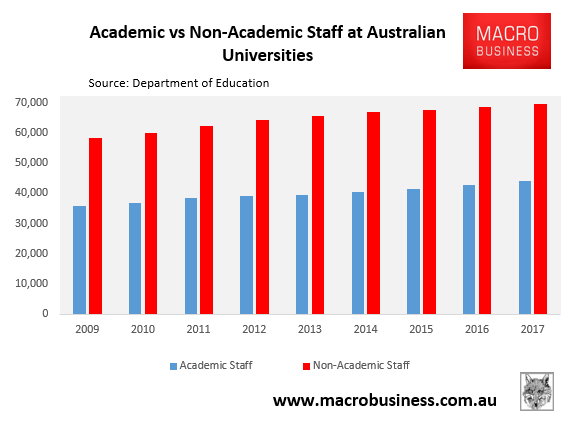
In 2009, there were 35,817 full-time equivalent (FTE) academic staff at Australia’s universities compared with 58,167 non-academic staff – a difference of 22,350.
But in 2017, FTE academic staff had grown to 44,057 compared with growth in non-academic staff to 69,557 – a difference of 25,500.
Reflecting the above, the ratio of students (both international and domestic) to academic staff has increased significantly across Australia’s universities, from 20.05 in 2009 to 21.44 in 2017:
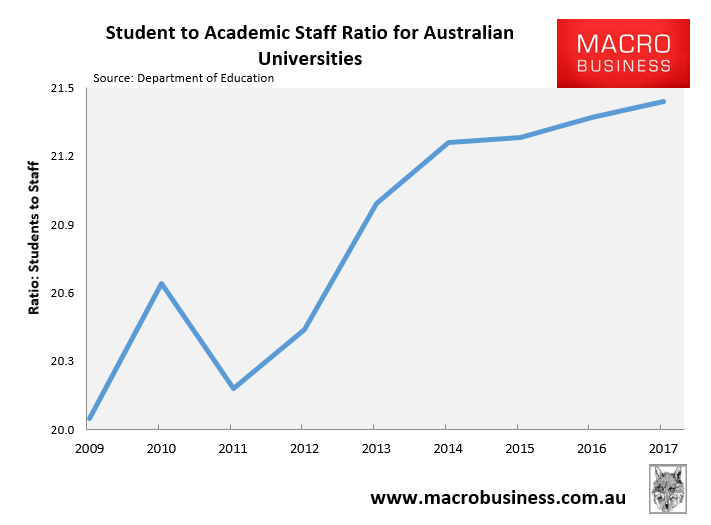
This is concerning given the rapid growth in international students, of whom are primarily from non-English speaking backgrounds and, therefore, require higher maintenance than domestic students. In turn, the increase in student-to-academic staff ratios implies that teaching staff are being placed under increased pressure, thereby eroding education standards for students.
With this background in mind, I have charted student-to-academic staff ratios across Australia’s top 100 ranked universities (and nationally) between 2009 and 2017. This is intended to give a broad indicator of quality across these institutions, with a lower ratio obviously preferred to a higher ratio:
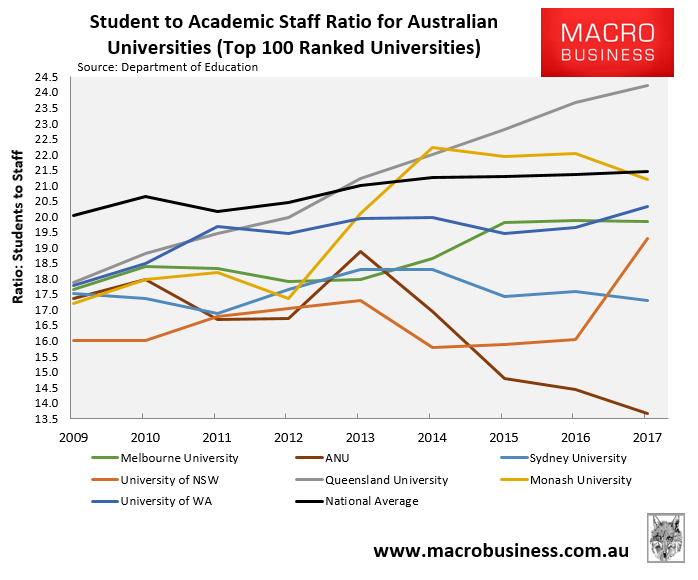
As you can see, there is much variation across these institutions, with Queensland University having by far the worst ratio and ANU by far the best.
Moreover, there has been significant change over time. Queensland University, Monash University, University of WA, Melbourne University and University of NSW have all experienced meaningful increases in their student-to-academic staff ratios since 2009. By contrast, ANU’s ratio has actually decreased significantly, whereas Sydney University’s is basically flat.
If a quality educational experience is sought, prospective students should be sceptical about studying at Queensland University, given the rapid lift in the number of students compared with academic staff. By contrast, ANU and Sydney University look like safer bets.
That said, all of the top-100 universities presented above, other than Queensland University, had lower student-to-academic staff ratios than the national average, suggesting that quality is generally even lower at the second tier universities.
unconventionaleconomist@hotmail.com

